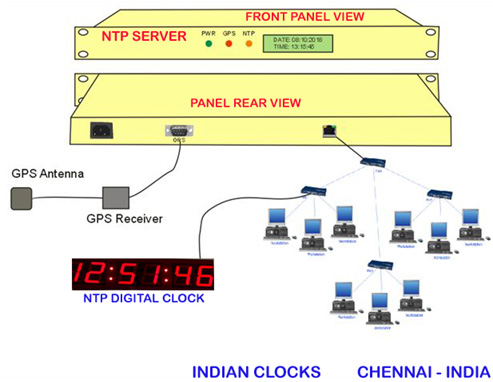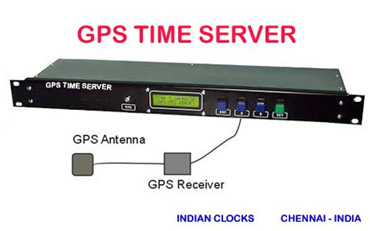MSME Reg No: UDYAM-TN-24-0006562. Dt:25-11-2020 +91 98844 88190, +91 63748 64578
The Network Time Protocol (NTP) is a networking protocol for clock synchronization between computer systems over variable-latency data networks. In operation since before 1985, NTP is one of the oldest Internet protocols in current use.
NTP is intended to synchronize all participating computers to within a few milliseconds of Coordinated Universal Time (UTC). NTP can usually maintain time to within tens of milliseconds over the public Internet, and can achieve better than one millisecond accuracy in local area networks under ideal conditions.
NTP servers, of which there are thousands around the world, have access to highly precise atomic clocks and GPS clocks. Specialized receivers are required to directly communicate with the NTP servers for these services. It is not practical or cost-effective to equip every computer with one of these receivers. Instead, computers designated as primary time servers are outfitted with the receivers, and they use protocols such as NTP to synchronize the clock times.

Accurate time across a network is important for many reasons; discrepancies of even fractions of a second can cause problems.
NTP (Network Time Protocol) provides accurate and syncronized time across the Internet.
NTP Servers will have LCD display panel in the front side and indicate the time with milli second accuracy. You can synchronize all the systems working in your facility with this NTP Servers so that the entire office will have NTP Server time. Normally the Digital clocks can also be synchronised with these servers. So that the clocks will display your NTP Server time all round the year.
GPS Servers are computer devices that obtain very accurate time from the Satellite system in order to precisely synchronize the clocks of computers over a network. The Network Time Protocol (NTP) is used to transfer time to servers, workstations and network infrastructure, such as routers and switches.
GPS Time Server is a compact DIN rail mountable unit which synchronizes and maintains the timing and frequency requirement of power and process industry equipment using signal obtained from external sources such as GPS, GLONASS Etc. It provides nanosecond accuracy when external time references are not available. It has the storage facility to store the system log files. It delivers NTP,RS232 & RS485 outputs. It supports wide range of power supply input 90V-270V AC/DC. 24 satellites of the Global Positioning System (GPS) have an inbuilt highly accurate atomic clock. GPS receiver synchronized to several GPS satellites, a nanosecond accurate time signal can be calculated from the time signals.
A GPS time server utilizes the GPS receiver as a reference time source and distributes the received absolute time throughout the network
